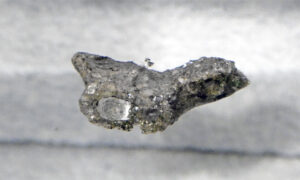Today’s windy video comes to you from just below the Continental Divide.
You know those little ‘Made in China’ stickers on everything you can buy in the US? Well, don’t be surprised when those all say ‘Made in America’ in a few years as the US carries out the greatest reindustrialization process ever…and if you thought the United States’ industrial buildout during WWII was wild…buckle up.
There’s a lot at play here, but we’ll touch on the legacy factors first. The US arguably has the world’s most highly skilled labor force, but we’re hyper-focused on the value-added stuff and outsource the rest. This arrangement can’t last much longer, but the shale revolution and petrochemical production have primed us for all the reshoring coming down the line.
Recently, COVID showed the US (and the world) that our supply chains weren’t as great as we thought. Now we’re having to reshore everything and turn over the power system, driving construction levels and spending through the roof. And the Inflation Reduction Act has helped provide the funding and regulatory structure to make it all happen.
Although inflation will be up there for a while (surprise, you can’t double your industrial plant without that happening), we’re on a solid trajectory to establish a fully regionalized supply chain. And if the US wants to have any sense of security down the line, we’ll just have to suck it up for a bit.
Prefer to read the transcript of the video? Click here
Here at Zeihan On Geopolitics we select a single charity to sponsor. We have two criteria:
First, we look across the world and use our skill sets to identify where the needs are most acute. Second, we look for an institution with preexisting networks for both materials gathering and aid distribution. That way we know every cent of our donation is not simply going directly to where help is needed most, but our donations serve as a force multiplier for a system already in existence. Then we give what we can.
Today, our chosen charity is a group called Medshare, which provides emergency medical services to communities in need, with a very heavy emphasis on locations facing acute crises. Medshare operates right in the thick of it. Until future notice, every cent we earn from every book we sell in every format through every retailer is going to Medshare’s Ukraine fund.
And then there’s you.
Our newsletters and videologues are not only free, they will always be free. We also will never share your contact information with anyone. All we ask is that if you find one of our releases in any way useful, that you make a donation to Medshare. Over one third of Ukraine’s pre-war population has either been forced from their homes, kidnapped and shipped to Russia, or is trying to survive in occupied lands. This is our way to help who we can. Please, join us.
CLICK HERE TO SUPPORT MEDSHARE’S UKRAINE FUND
CLICK HERE TO SUPPORT MEDSHARE’S EFFORTS GLOBALLY
TRANSCIPT
Hey, everyone. Peter Zeihan here. Coming to you from Heart Lake, above Boulder, Colorado. Just below the continental divide, which is where I’ll be for the next few days. I suppose some day. Then, before I left, I could do a few videos and this first one is going to be on construction spending in the United States. I know some of you like and I get it.
But remember that we are in the midst of the greatest industrialization process in the United States history, building an industrial infrastructure and factories and refineries and pipelines and roads and all that faster than we did during World War Two. There’s a lot of things in play here, so let me start with kind of the legacy factors, and then we will go into the more the issues of the now.
So first legacies. The United States has the most highly skilled labor force in the world by a significant margin. There are a few countries like Singapore where the overall educational level might be higher. But, you know, Singapore is a country of 5 million people. The US is a country of 330 million. If I didn’t say the German to the French, which might have a little bit more productivity per hour than the United States, you know, we’re talking about the labor force in the United States four or five, six times as much.
And that means there’s not a lot that the United States can’t do far puts its mind to it. Now, historically, since 1945 and especially since 1991, what the U.S. has done is focus on the really, really, really high value added. We basically shipped all of our underwear manufacturing overseas, first to Mexico and then to China and India and instead we designed computers, we designed space station, designed microchips.
Not a lot of the manufacturing happens here because to be perfectly blunt, that’s not sufficiently high value added for the skill set of the American workforce. So that’s always been in the background. Second, the shale revolution courtesy of the shale revolution, the United States is glutted with natural gas, which is not merely a power fuel. It’s also used as an input for chemical components, which then go into all other types of manufacturing, whether or not you’re looking to do electrical work or diapers or anything in between.
The shale revolution made us net independent of natural gas roughly ten years ago. Net oil independent a little bit after we had a few hiccups because of COVID, but we’re back to being that independent in all the factors that matter again. And one of the first things that the shale revolution encouraged the United States to do in terms of industrial build out what we’re fighting, the chemicals and so we now are the world’s largest producer of all the precursor materials that go into all petrochemicals everywhere in the world.
And now we’re using those materials to do the next stage of heavy manufacturing. So this kind of the first big phase of this industrial spending issue isn’t necessarily for building power lines. It’s for building the stuff that allows us to build the stuff. Now on to the more current issues, too big things. First, COVID. We discovered that our international supply chains perhaps weren’t as reliable as we thought they were.
And between China’s centrality and all things manufacturing and China’s own COVID lockdown, we found out that if we wanted stuff, we had to build it ourselves. So we did. And during COVID, we saw total industrial construction spending double above the 50 year average. More recently, in the last two years, we had the Inflation Reduction Act passed by the Biden administration, which has nothing to do with inflation.
There’s more going on here than just aspects of a Green New Deal. It’s turning over the power system and reshoring the production line for everything in the power system. It includes everything that we did with NAFTA and after to you know, I should say a third thing, because after two is a big piece of this, too. But anyway, the I.R.A. put roughly $1,000,000,000 into the system to build out what we need in order to meet the requirements.
And that has doubled the construction spending again. So we were already at record levels three years ago. We’ve now doubled the record and this is going on from there. Now, this does mean we’re going to have some more inflation in the short in the mid-term, because there’s no way you double the size of the industrial plant without that.
But once we get to the back side of this a few years from now, we will have a supply chain system that is local, that is employed by locals, that serves local customers and uses less energy and less water, and has fewer steps and is largely immune to international shocks. This is a really good story. At every step.
We just have to suck up a little bit more inflation while we’re doing the work. Alright. That’s it. I’m going to go put on some gloves, but.








